Sony CyberShot DSC-RX1R II Review

Photo by André Filipe on Unsplash
Sony RX1R II CyberShot Camera
The Sony CyberShot DSC-RX1R II is one of the smallest full-frame cameras in the world. This point and shoot model with a fixed lens easily fits into a bigger pocket, while its image quality is outstanding and comparable to a high-end DSLR.
Unfortunately, having a compact body accompanied by the full-frame sensor comes with certain disadvantages. To name a few, the camera’s battery drains out very fast while handling might also be an issue for those accustomed to bulkier models.
However, the RX1R is still a great camera and it might be just what you need. In this review, we will discuss all the pros and cons of the Sony CyberShot DSC-RX1R II so you can make your own decision if it’s worth buying. Read review of Sony RX100 VII camera on our website PhotographyTalk.com.
Sony CyberShot DSC-RX1R II Specs
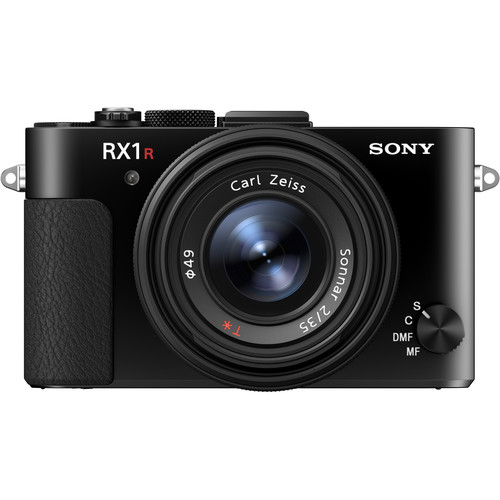
There are many good things about the Sony RX1R II but its 42.4-megapixel CMOS Exmor R® sensor is what distinguishes it from all other point and shoot cameras.
With such high resolution, this camera manages to capture even the tiniest details while it also allows you to make huge prints out of your images. Overall, there are not many point-and-shoot cameras that can compete with the RX1R II when it comes to the image quality.
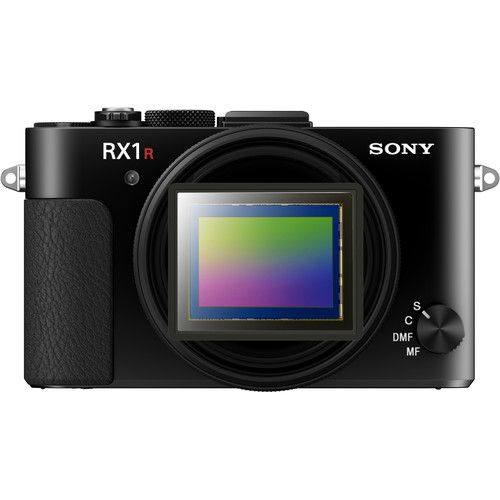
The Sony RX1R II performs great in any given light environment because of its native ISO range of 100 through 25,600 (extendable to ISO 50 - 102,400). Moreover, it has a unique option to choose from three optical variable low-pass filter effect settings: Off (to prioritize image resolution), Hi (to reduce moiré and color artifacts) and Standard (to balance those priorities).
The camera uses the Fast Hybrid AF system with 399 phase-detection AF points. The same autofocus system is used in the Sony a7 II and it will without a doubt provide a reliable and quick subject tracking performance. The RX1R has a run-of-the-mill burst rate of 5 frames per second, so if you are particularly interested in sport or wildlife photography, this camera might not be the best option.
Sony CyberShot DSC-RX1R II Body and Design

The Sony RX1R II has an attractive design which is almost identical to the design of its predecessors (the RX1 and RX1R). The camera has a dimension of 4.45 x 2.56 x 2.83 inches and weight of 1.12 lb (with lens and batteries included).
For framing scenes, there is a large and clear pop-up electronic viewfinder as well as a tilting LCD screen (without touchscreen technology).

Given this size and weight of the camera, you might think of the RX1R II being a perfect choice for travelers and street photographers. However, bear in mind the battery life of this camera is only around 200 shots. This is not very convenient if you are out there in nature where there is no possibility to charge the camera.
Sony Cyber-shot DSC-RX1R II Build and Handling

The RX1R is relatively expensive, so the fact that there is no environmental-sealing on this camera is surprising. This would add size and weight to the body, but it would mean a lot to those who enjoy outdoor photography.
It has particularly shown to experience functionality issues while working in cold temperatures. In a cold environment, the camera works at a slower pace and its battery life is significantly lower.

Because of its compact body, you will need some time to get used to the camera’s dials and controls. They are tiny and closely positioned so it is possible that you’ll press some of them unintentionally, especially when you are using a viewfinder.
Another thing that makes handling experience of this camera imperfect is a relatively small grip. Because of the tiny grip, holding the camera in one hand feels a bit uncomfortable and you might want to consider buying an optional TGA-1 thumb grip which can be attached to the camera’s hot shoe.
Sony CyberShot DSC-RX1R II Video Performance

Although the RX1R II uses the same type of sensor as the Sony A7 II, unfortunately, it isn’t capable of shooting 4K videos.
In terms of video recording capabilities, the camera maxes at Full HD (1080p) recording at 60p, 30p, and 24p. There is also an option to record slow-motion sequences if you drop the resolution down to 1280 x 720.
The RX1R provides outstanding low-light performance in video mode while its autofocus performance doesn’t disappoint either. Moreover, the camera uses the digital SteadyShot image stabilization system in order to reduce shakes in video shots.
Learn more about the capabilities of the Sony RX1R II in this hands-on review by DigitalRev TV.
Sony CyberShot DSC-RX1R II Lens
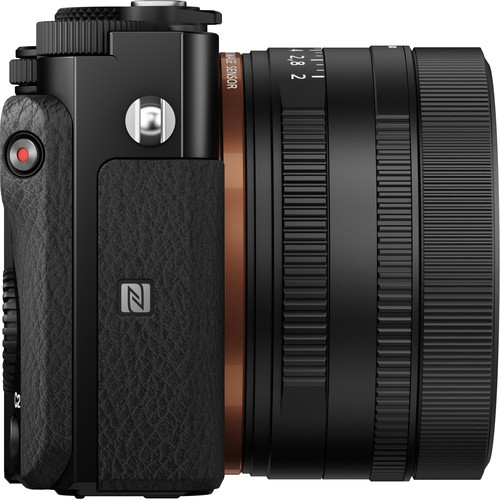
The RX1R II comes with a compact fixed lens.
The ZEISS 35mm F2 lens is inherited from the RX1R I. The lens is perfectly matched with this type of camera and aimed to produce good results in all types of situations.
Sony CyberShot DSC-RX1R II Price

With a price tag of around $3,000, we can’t say the RX1R II has a consumer-friendly price. However, you can find this camera at significant savings if you buy used Sony CyberShot DSC-RX1R II.
Check out the inventory on MPB. It is a website which specializes in connecting those who are selling and buying used equipment. Alongside with used camera models, there you can find all sorts of photography equipment at affordable prices.
If you're not yet familiar with MPB, check out my MPB review to get to know this top-shelf company.
We Recommend
Sony RX100 VII Review

Sony RX100 VII Camera
If you are already familiar with the RX100 series, you might have an idea of what to expect. If not, let’s quickly introduce it as a compact, high-end super-zoom camera with great image quality and versatile functions.
Without a doubt, travelers and photo enthusiasts will find a use for the Sony RX100 VII. We can tell this because its predecessor already had pretty stunning features such as a large 1” sensor, 4K video recording and 24 fps burst rate. The latest camera in the RX100 series can only be better, right?! One of the finest DSLR camera Sony A7 has similar features same as RX100 mainly compact size and fantastic image quality.
In the video above, I outline what's new about the Sony RX100 VII, what I like and dislike, and whether it's a good buy.
For more details, check the review below!
Sony RX100 VII Specs

Like its predecessor, the Sony RX 100 VII features a large 1-inch Exmor RS CMOS sensor. Although the camera fits into a jacket pocket, its powerful sensor allows it to deliver sharp and rich-in-detail 20-megapixel photos.
Another great thing about the RX100 VII is that it comes with a 24-200mm equivalent F2.8-4.5 lens which is great for wide-angle and telephoto shooting. Whether you want to take an image of the close target or a distant object, this camera will make the best out of it.

The Sony RX100 VII has a continuous shooting speed of 20 frames per second. This is particularly useful for shooting moving targets such as animals or sports players. Although the RX100 Mark VI had slightly bigger burst rate (24 frames per second), it also had viewfinder blackout.
With the RX100 VII, you can apply burst shooting without blacking out the viewfinder, which is much more useful and practical. Additionally, the camera shoots seven-image bursts at up to 90 frames per second.
The best thing about the Mark VII is that it carries big improvements in autofocus technology. The camera has 357 phase-detection and 425 contrast-detection AF points and it can acquire focus in 0.02 seconds. In addition, the camera uses the most advanced Real-time Tracking and Real-time Eye AF.
Sony RX100 VII Body & Design

The Sony RX100 VII is a very tiny camera. It measures 4.02 x 2.28 x 1.69 inches and weighs only 0.67 lb. The camera easily fits into a pocket so it can follow you everywhere you go.
Overall, the new camera shares the same design as its predecessors. In order to save some space, the RX100 VII features a pop-up viewfinder. Additionally, it also has a built-in flash and tilting screen.
The LCD screen is touch-sensitive which is very practical for repositioning the focus area. Moreover, it folds up 180 degrees and down 90 degrees. This is very convenient for vlogging or shooting images from uncomfortable angles.
Sony RX100 VII Build & Handling

The Sony RX100 VII can be a bit complicated in terms of handling. Its buttons and controls are small, as is the camera body, so unless you have very delicate fingers, this camera can be a little difficult to handle.
As it is the case with most of the compact cameras, the RX100 VII doesn’t have weather-sealed protection. With this being said, try not to expose the camera to water, sand or freezing temperatures.

However, Sony has also introduced a new leather-look body case for the RX100 series, which includes a lens jacket and shoulder strap to protect the camera from bumps and shocks. If you intend to use the RX100 VII as a traveling camera, it is worth considering buying it.
Sony RX100 VII Video Performance
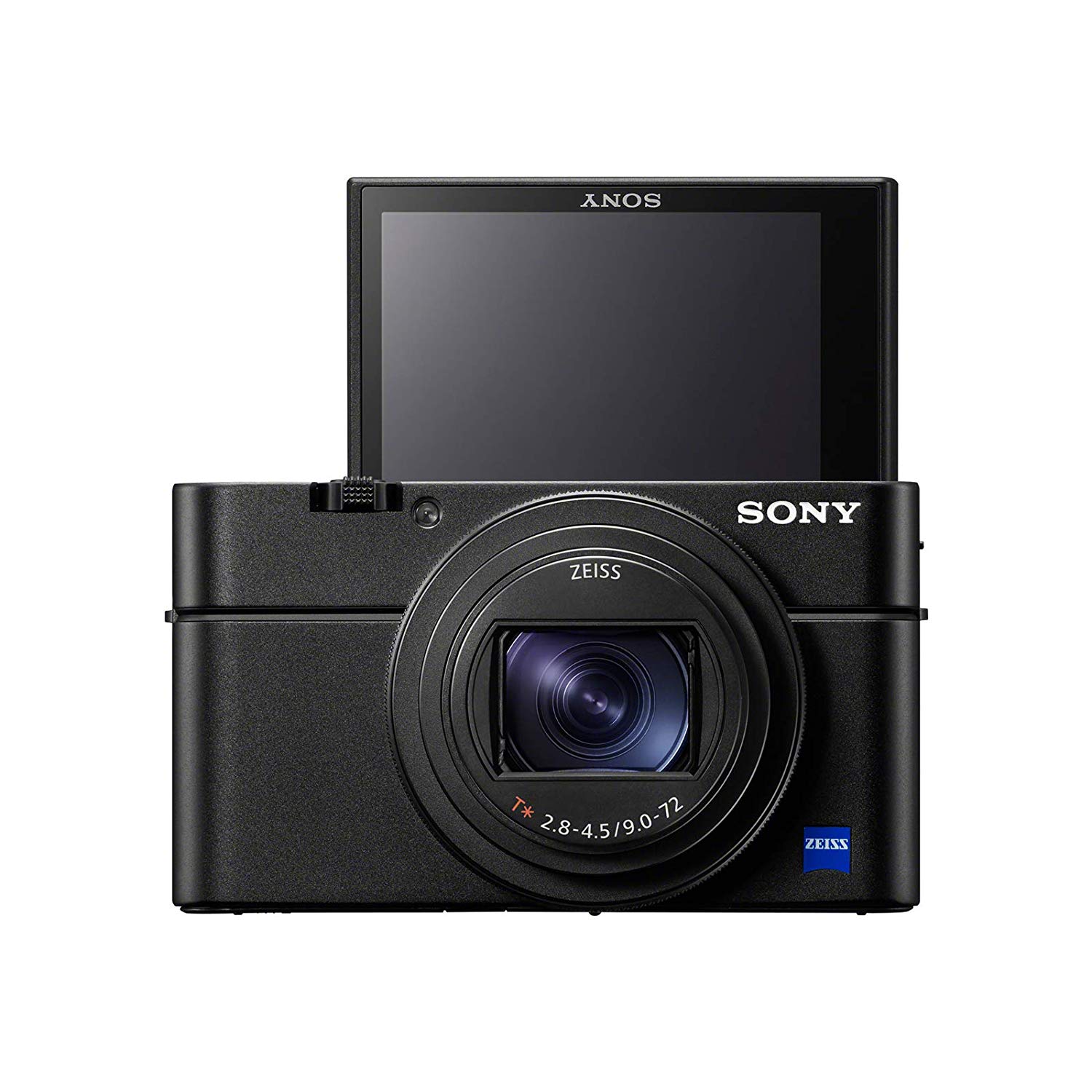
When it comes to video capabilities, the RX100 VII shoots 4K video at up to 30p and Full HD video at up to 120p. These are the same features as in the Mark VI, however, the Mark VII adds a 3.5mm mic socket, more effective stabilization, and a better autofocus system.
The RX100 VII is generally a good camera for vlogging. First of all, it has amazing video features. Moreover, it has an articulating screen, while it is also very portable and easy for use.
4K videos are limited to only 5 minutes in order to protect the camera from overheating. There is an option to manually disable this limit, but Sony recommends you to use a tripod while recording movies with this setting.
Sony RX100 VII Lens

The Sony RX100 VII comes with a 24-200mm f/2.8-4.5 Zeiss Vario-Sonnar lens. Due to its big focal range, the camera provides versatility which makes it great for many different uses. However, it is not the best option for night photography because this lens does not perform as well under low light conditions as in other environments.
The RX100 VII is particularly good for travel photography. The only disadvantage is that it can take only about 250 shots on a full charge. If you spend a lot of time taking pictures, it’s good to know that you can charge the camera via the USB-C port. Also, using a viewfinder instead of an LCD screen might save some battery life.
Sony RX100 VII Price

Clearly, the Sony RX100 VII has a very interesting set of features. Although it is no bigger than an average smartphone, it produces stunning and authentic images. Still, this does not come at a cheap price.
At the moment, it's priced at $1,298.00.
If this is out of your budget, you might consider getting some other camera model from the RX100 series, such as the Sony RX100 V or Sony RX100 VI.
Both of these cameras are also worth buying in 2019, and you can have them at a low price if you don’t mind buying used. Check out MPB.com, where you can get them for a good deal.
We Recommend
Zeiss Batis 18mm f/2.8 First Impressions
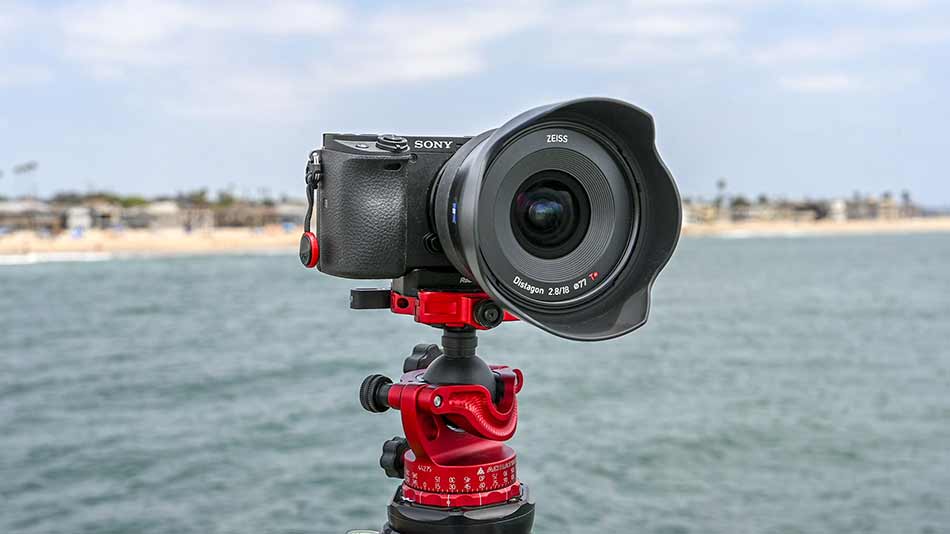
A couple of weeks ago, I got a Zeiss Batis 85mm f/1.8 lens. In this article, I offered my first impression of it, which was, spoiler alert...that it's an incredible lens.
Well, this time around, I've got a Zeiss Batis 18mm f/2.8 lens to take for a test drive, and initial impressions are that this bad boy is every bit as good as its 85mm cousin.
Zeiss 18mm f/2.8 Batis Specs

This lens is stuffed with features that photographers of all ilks will appreciate:
- Focal length - 18mm
- Angle of view - 99
- Max aperture - f/2.8
- Min aperture - f/22
- Electronic aperture
- Lens elements/groups - 11/10
- Floating elements design that minimizes aberrations
- OLED display on the barrel that shows focus distance and DOF
- Dust and weather sealed
- Weight - 11.6 oz
- Dimensions - 3.94 x 3.15"
- Price - $1,499.00 at Adorama
Zeiss 18mm f/2.8 Batis Pros & Cons

Just as I discovered after only a few days with the Zeiss Batis 85mm lens, the 18mm lens has a number of slam-dunk features that are distinct benefits:
- Exceptionally fast autofocus
- Delightfully sharp
- Super lightweight construction, ideal for small Sony mirrorless cameras
- Excellent rubber focusing ring
- Superb weather sealing
I think all of the above are pretty self-explanatory except perhaps for the rubber focusing ring.
I list it as a benefit of this lens because I love the tactile nature of it. It feels beefy without being cumbersome, and you feel confident dialing in the specific zoom you want thanks to its smooth motion.

As far as cons go, I don't have any thus far.
Like I noted in my first impressions of the 85mm, the OLED display is a little cumbersome to turn on and off, but other than that, this lens has impressed the hell out of me.
Who Should Buy the Zeiss Batis 18mm f/2.8?

I'm mostly a landscape photographer, so I'll advocate for this lens as being an excellent candidate for any landscape photographer's camera bag.
The 18mm focal length is perfect for capturing those wide, sweeping vistas on a full frame Sony camera. Heck, with a 99-degree angle of view, you can capture a ton of detail!
In my case, shooting with the Sony a6400, the lens has an effective focal length of 27mm, which is still plenty wide for landscapes.
And since this lens is supremely sharp, all of that detail will be beautifully displayed!
The weather-sealed design is another reason why landscape photographers need this lens in their bag. Be it rain, snow, dust, or something in between, Zeiss has made sure the interior of the lens will remain safe.
It's not the cheapest lens in the world, but, hey, you get what you pay for! Learn more about the Zeiss Batis 18mm f/2.8.
